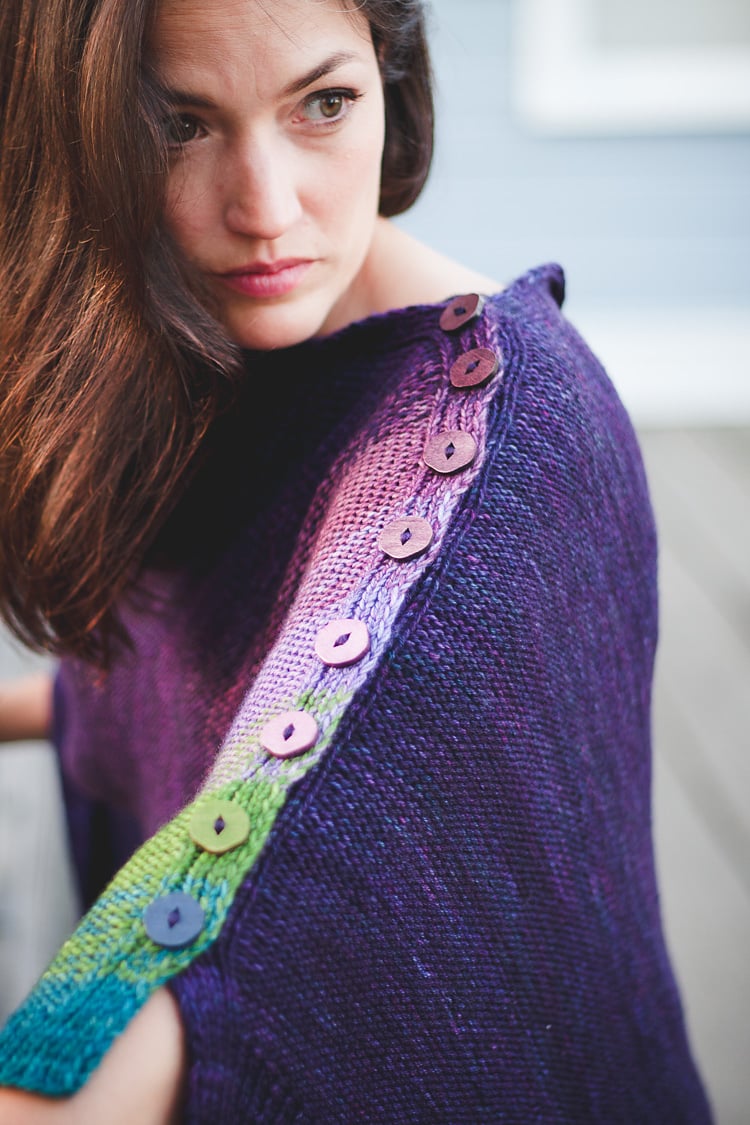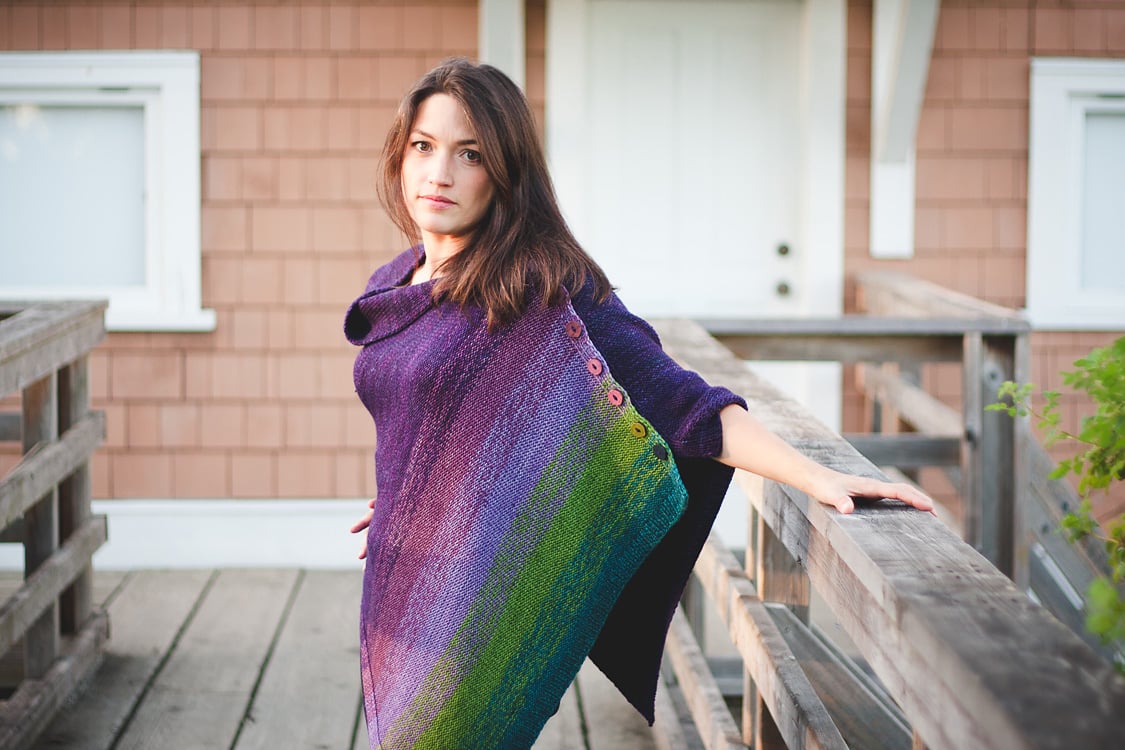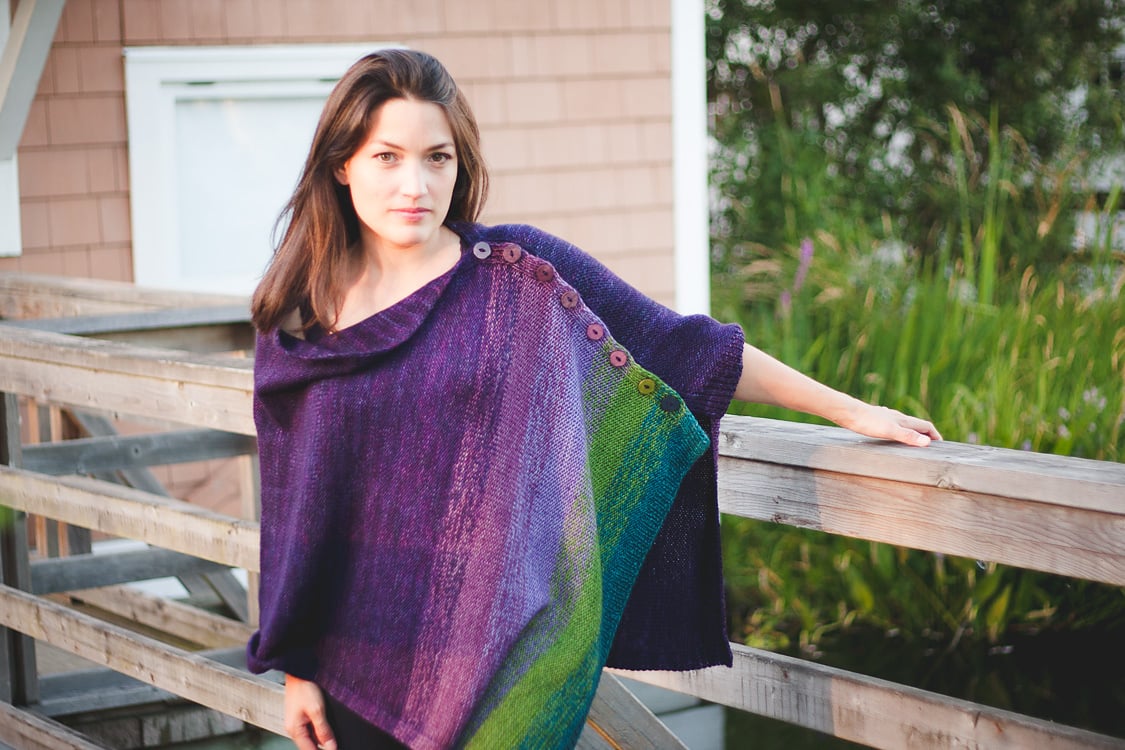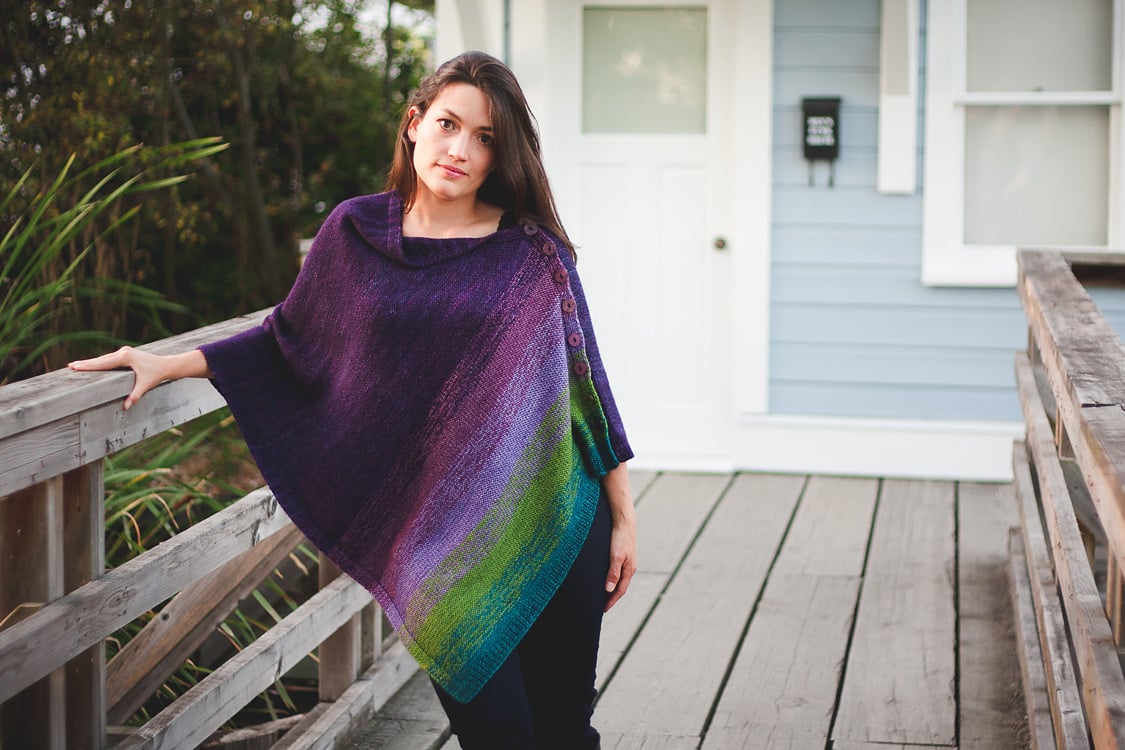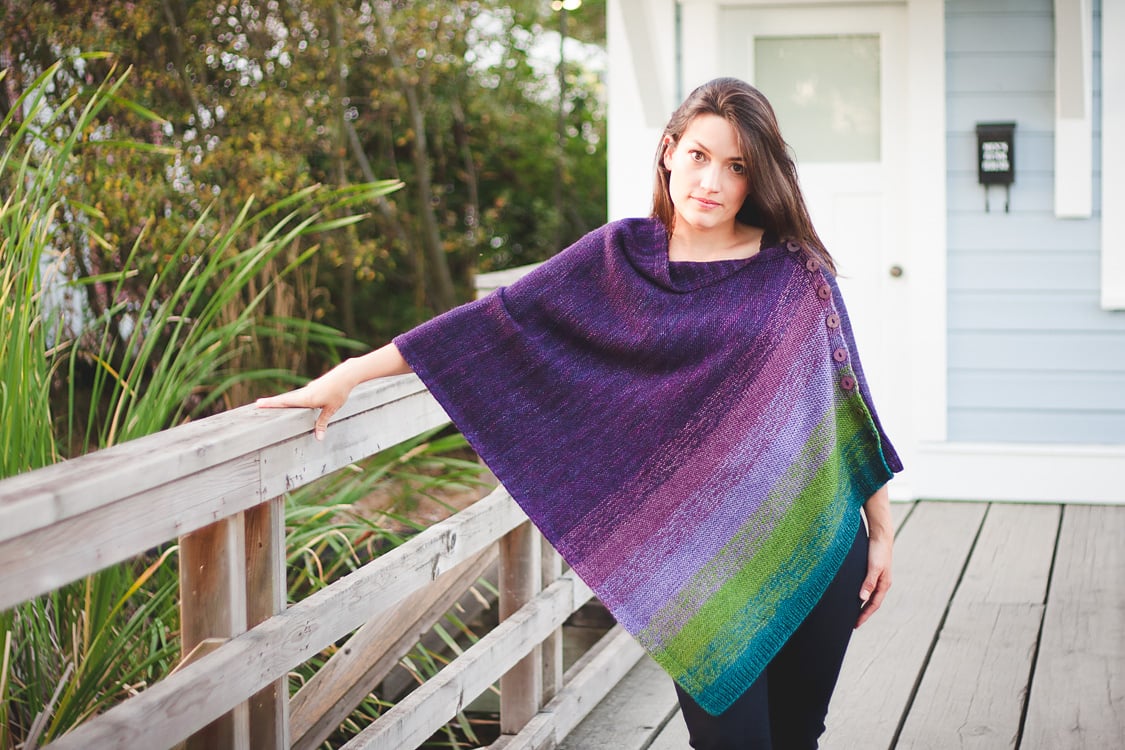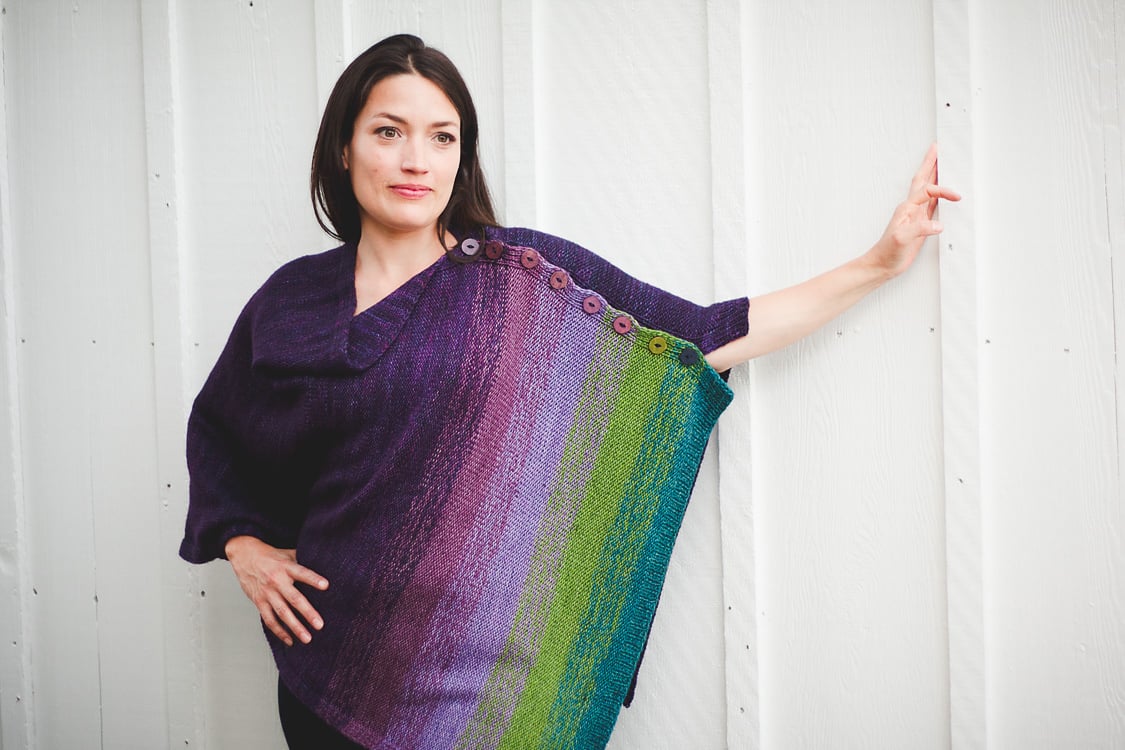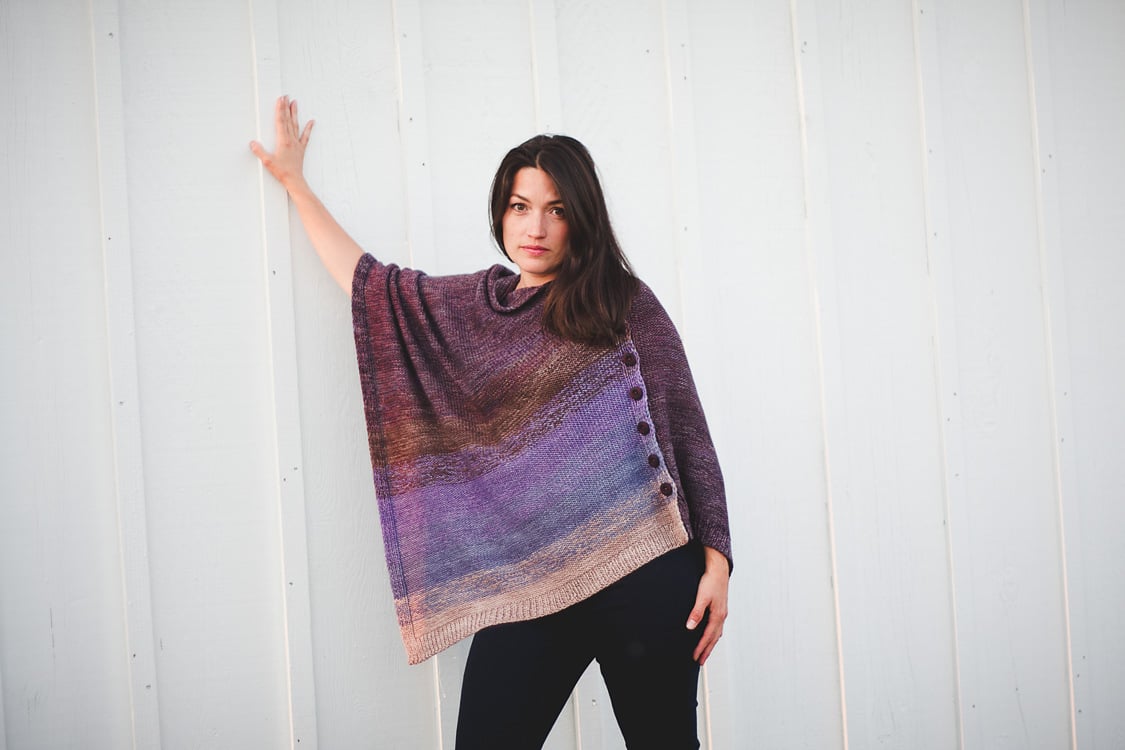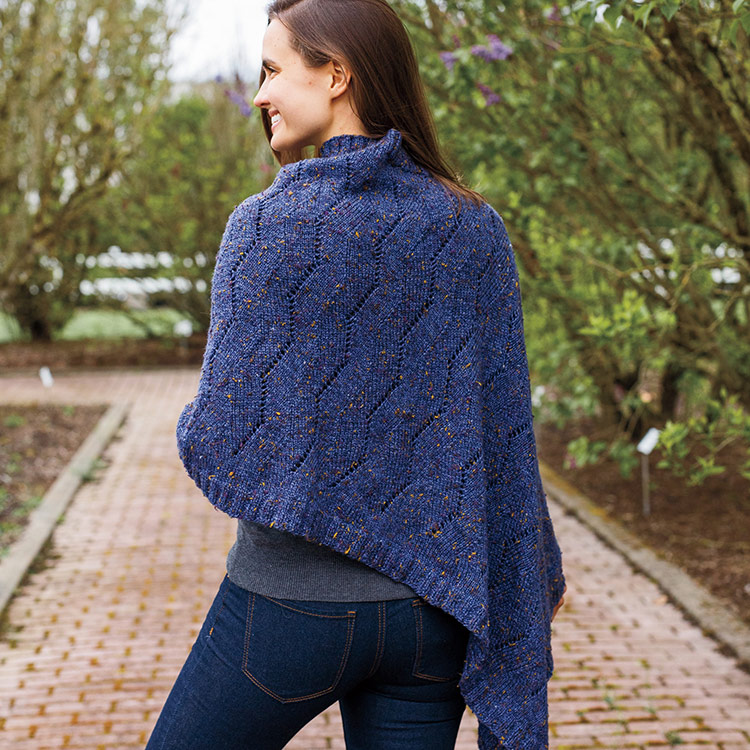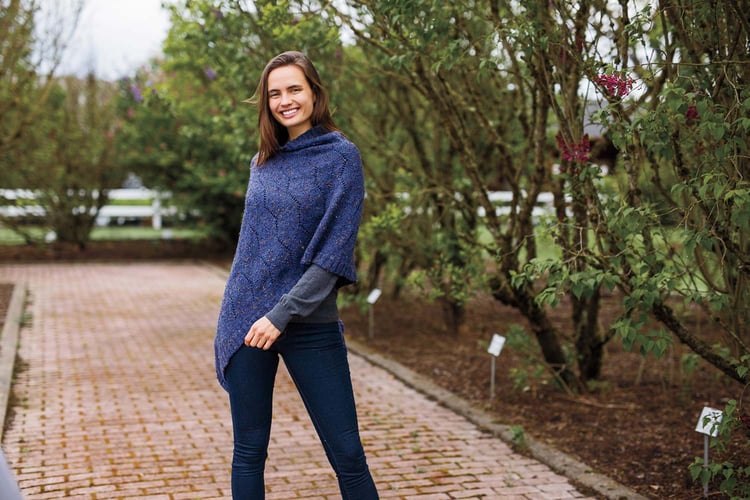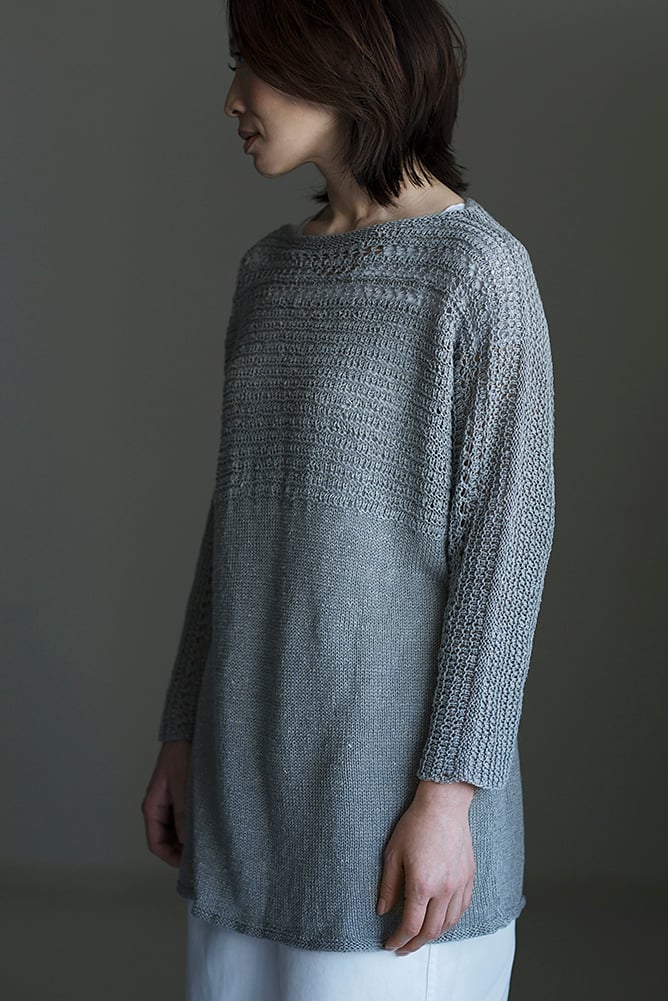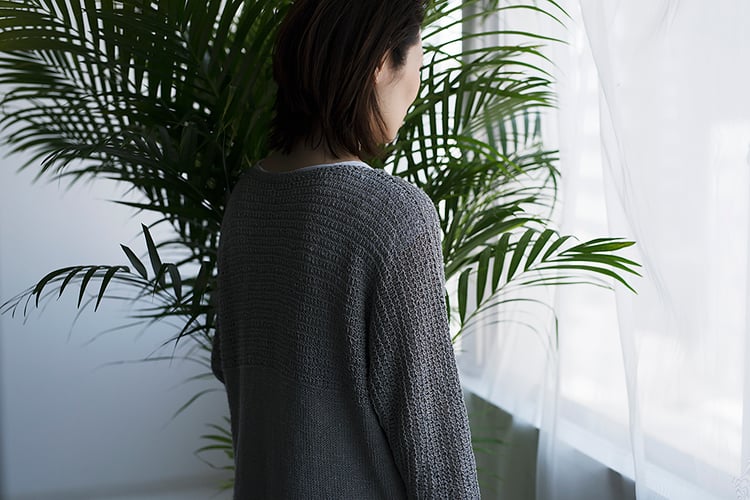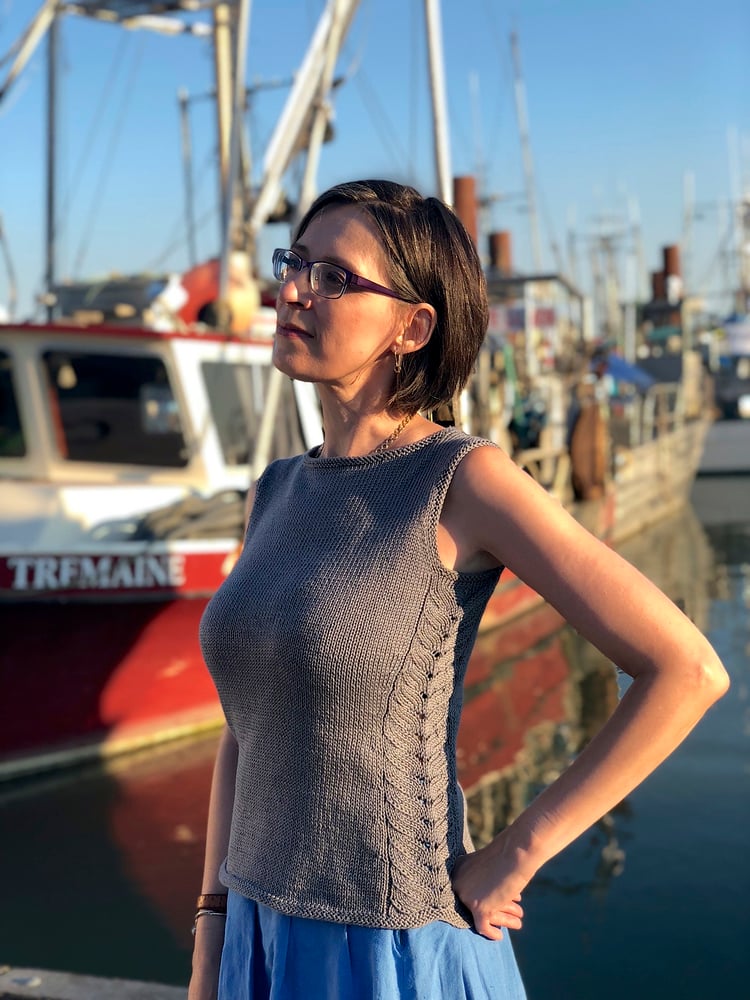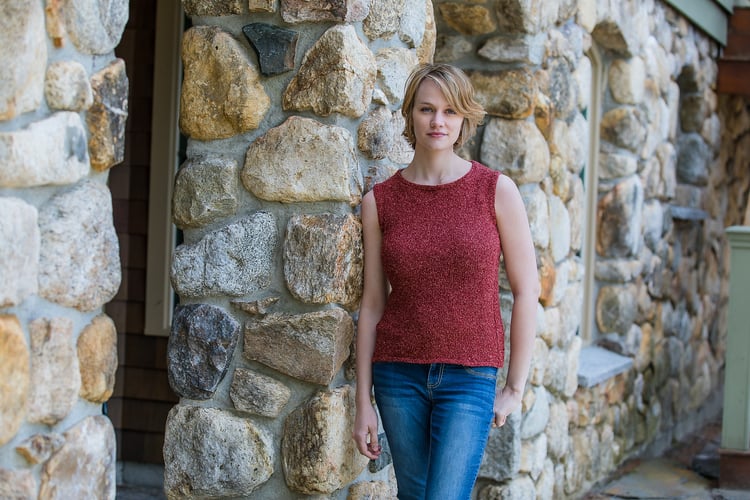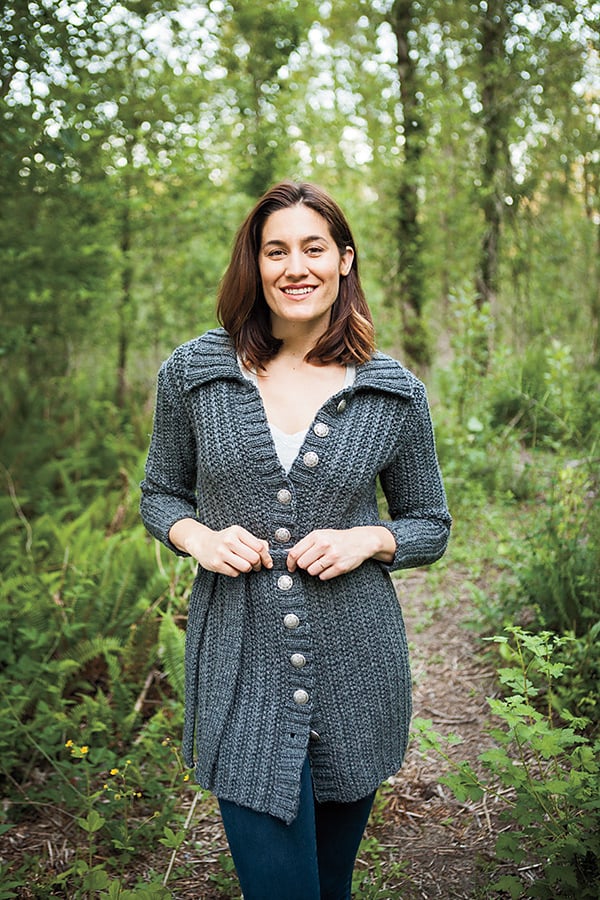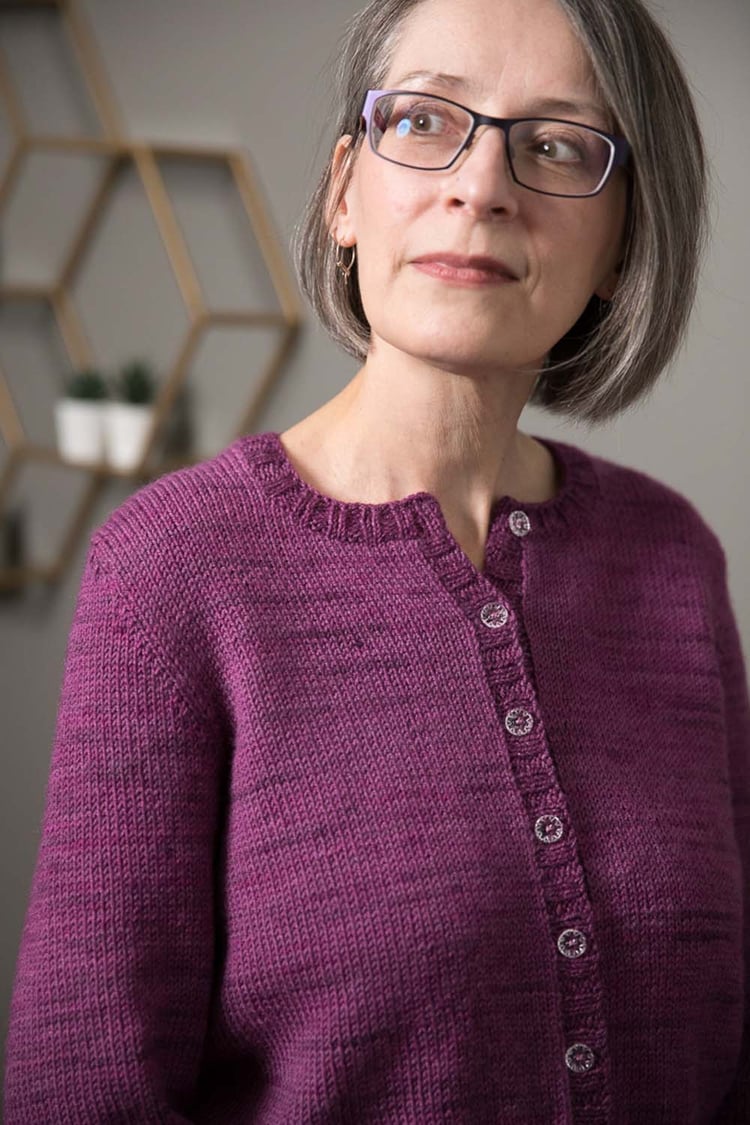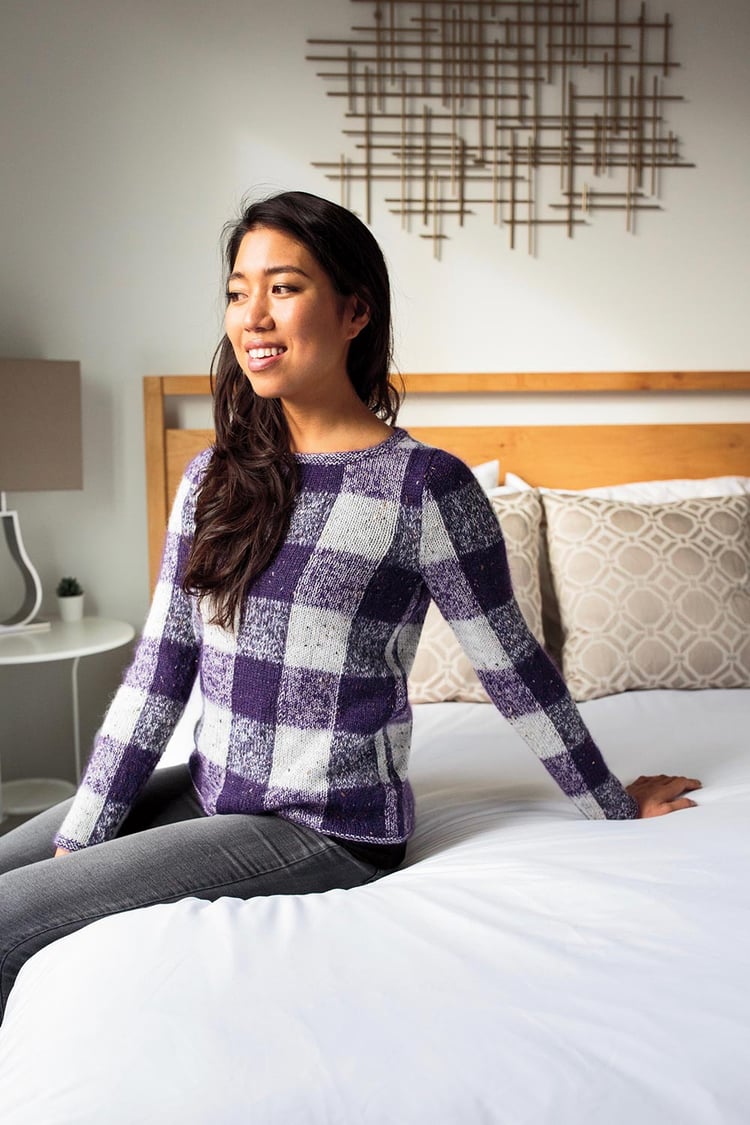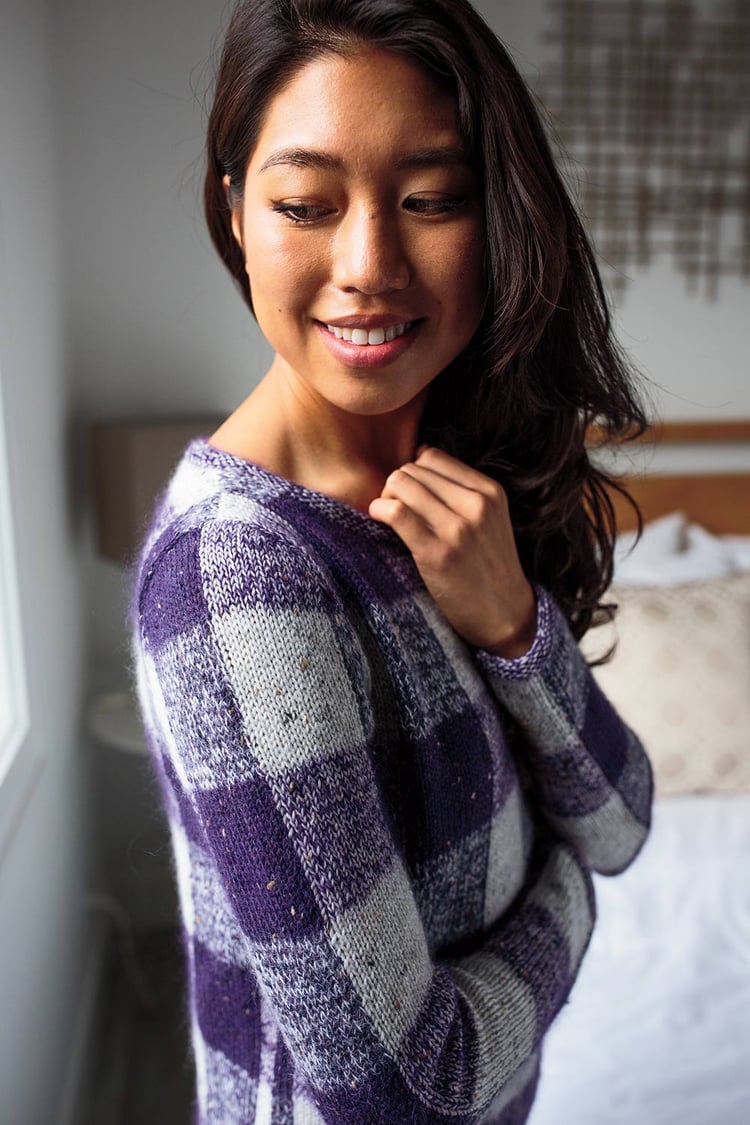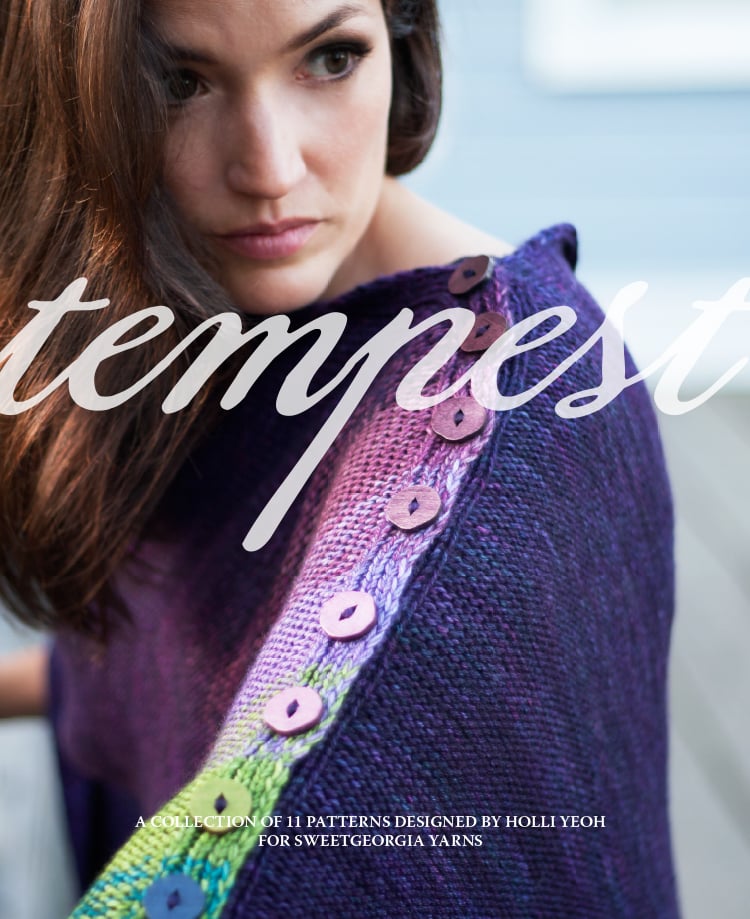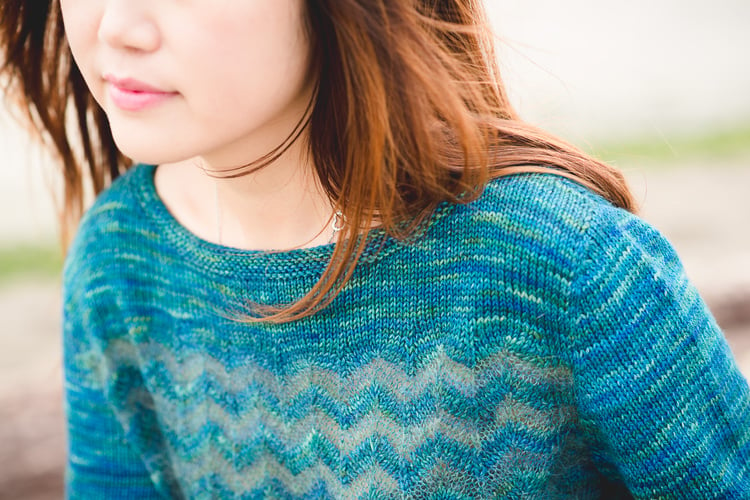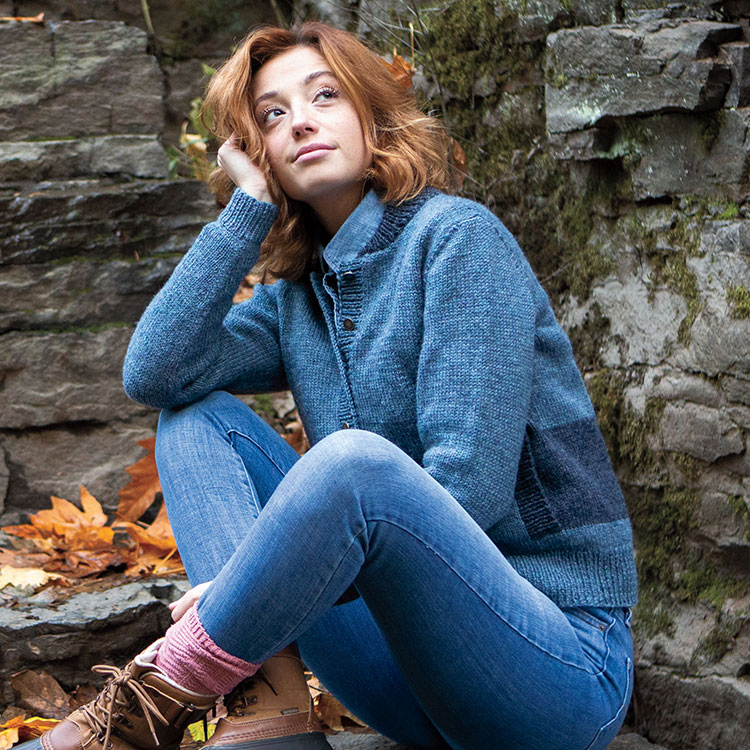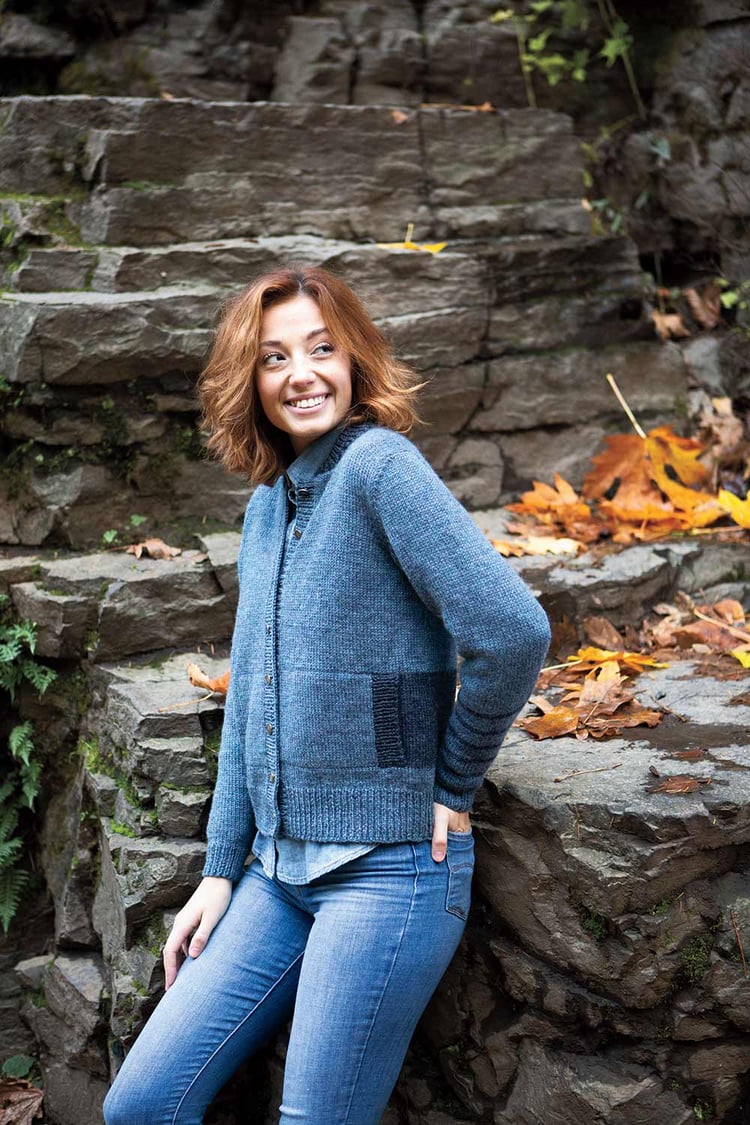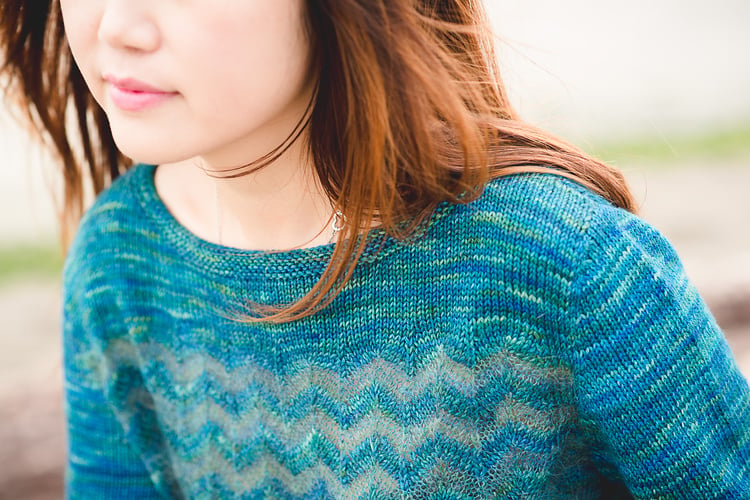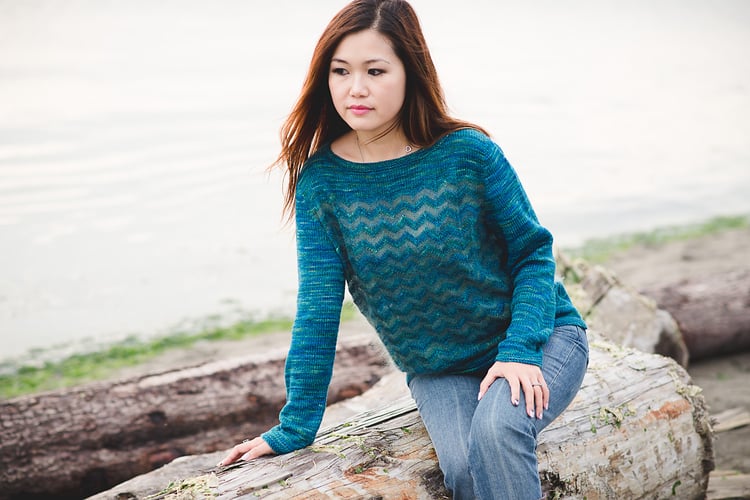Haven
On Sale
$9.00
$9.00
Indulge yourself and play with colour! This simple project features an ombré fabric created by working with two strands of yarn held together throughout. You work colour changes by first knitting with two strands of the same colour, followed by a strand each of the old colour and a new colour, followed by two strands of the new colour; repeat! To aid in the optical blending of the colours, the reverse stockinette side faces outwards. The poncho is worked as a large rectangle with buttonholes in one of the ribbed selvedges. Folded in half and buttoned, it creates a poncho that hangs diagonally. And a bonus, you can wear the poncho with the stockinette side out too.
#sizeinclusive to fit a 62” / 157.5 cm chest measurement.
This knitting pattern includes written directions, notes for accommodating for a different row gauge, and a schematic with measurements.
Sizes/Finished Measurements
- To fit 30-42 (42-62)“ / 76-106.5 (106.5-157.5) cm
- 25 x 33” (63.5 x 84 cm) buttoned
- 27 x 37” (68.5 x 94 cm) buttoned
Yarn
- Fingering weight yarn with 2 strands held together
- 2000 (2400) yd / 1825 (2,190) m main colour
- 200 (400) yd / 183 (365) m each of 4 contrasting colours
- Shown in SweetGeorgia Yarns CashLuxe Fine (affiliate): Ultraviolet (MC); Deep Cove; Basil; Wisteria; Mulberry
Substitution Notes
This gradient project was originally designed for hand-dyed, tonal yarns but would also work with commercially dyed yarns with a slightly different effect. Choose a fingering weight yarn in a wool or wool blend. It knits up at a worsted weight gauge holding two strands of yarn together. A worsted weight yarn could be substituted for more distinct colour changes (choose 8 contrasting colours instead of 4) or knit it all in one colour.
Gauge
18 sts and 24 rows = 4” (10 cm) in reverse stockinette stitch with two strands of yarn held together, using 5.5 mm (US 9) needle.
Row gauge is important to the success of this project. If the row gauge is not met it will affect the size of the neck opening when buttoned.
If you are able to get row gauge but not stitch gauge, you can compensate by changing your initial cast on (instructions provided). You may require extra yarn to complete the project.
Techniques
Slip stitch selvedge, buttonholes and sewing on buttons, holding two strands of yarn together.


